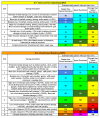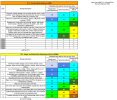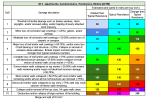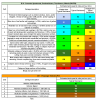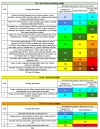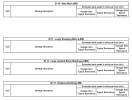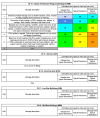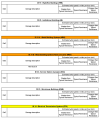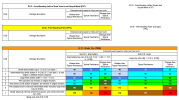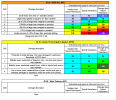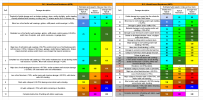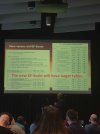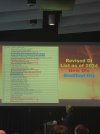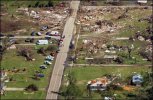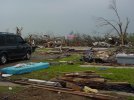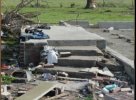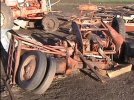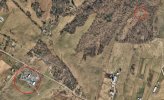A very relevant video released by Jim LaDue today regarding calibration of 1-2 family residence (homes) DIs given the recent stirrings about the climatology being affected by (mis)application of the EF-scale.
He explicitly says to not go overly conservative and that a house need not be a fortress to get an EF5 rating, it just needs to have evidence that it was properly engineered with bolts/ideally continuous load paths/etc.
Wonderful, incredible video. Jim is one of my favorite people in the damage surveying field, and this video shows why. You can tell he has a very reasonable, “no bs” approach these days. Here, he is really pushing back against the “how low can we go” mindset, and I love to see it. Everyone on this forum, PLEASE watch this video! You won’t regret it.
Video highlights:
-Pointing out that homes with post-Andrew hurricane codes will likely remain fully intact even if hit by an EF3. He uses the Cape Coral EF2 as an example, and basically says it was likely an EF3. This concept seems to be in practice now, as several homes hit by tornadoes during the Hurricane Milton outbreak received EF3 ratings despite being left intact.
-Explicitly gives an example of a house that was underrated by NWS Nashville following the Clarksville EF3. Nashville is one of the most problematic offices when it comes to damage surveys. Glad he had the guts to actually give a real-life example of a WFO playing it too conservative, rather than Tim Marshall’s typical “The NWS knows what they’re doing so don’t question them” attitude.
-His Elkhorn example (along with Marion this year) has obliterated a misconception I have carried for many years. What I used to dismiss as “subfloor sliders” can actually be EF4 candidates given enough contextual evidence. The walls were only straight nailed into the subfloor at the Elkhorn house he showed, yet it was a clean sweep, there was debarking nearby, and vehicles were lofted and thrown nearby (he didn’t mention the latter two details but I know this to be true from the DAT). So basically, a house swept from its subfloor can be rated EF4 as long as it’s of newer construction and there is contextual support. I didn’t know that until this year, and have perpetuated my misconception that this type of damage is automatically EF3 many times on this forum. For that, I apologize. I know a decent amount about damage surveying and construction, but I’m still wrong about things sometimes, and I still learn new things every year. Now here’s what’s really crazy. Correct me if I’m wrong, but it seems like he essentially said that a clean subfloor can earn an EF5 rating if external sheathing (that light green covering you sometimes see on the exteriors of homes being built) is present or the wall studs are toe-nailed! That means a house can technically be rated EF5 WITHOUT ANCHOR BOLTS HOLDING THE WALLS DOWN!! That is an INCREDIBLE statement that significantly lowers the impossible to clear bar for EF5 house damage!
-He used Moore 2013 as an example to show that EF5 house damage is not this unobtainable thing, and that surveyors should not expect a “total fortress” for a home to deserve an EF5 rating. That is the exact thing so many of us have been saying for years, and for one of the leading experts in the EF scale application field to say that in a NWS presentation, is monumental and incredibly validating. He explicitly said to not play it too conservative. Awesome that one of the experts FINALLY said it!
We had Tony Lyza’s paper, then we had Enderlin, and now we have this video. On top of that, I have it on good authority that additional positive things that I can’t elaborate on are happening behind the scenes regarding ratings. I wish I could give more details, but let’s just say there is reason to be optimistic. All in all, it suddenly feels like things may
finally be headed in the right direction. Let’s all hope this is the turning point!
